
China’s Gravity-1 rocket launching from a sea-based platform, January 11, 2024.Photo: Liu Huaiyu (AP)
We knew 2024 was going to be a landmark year in spaceflight, and judging by the wide range of developments in just the first month, we’re in for an extraordinary ride throughout the rest of the year.
It’s been a wild month in space. NASA finally cracked open its asteroid sample container, revealing cosmic secrets inside. Meanwhile, the Ingenuity Mars helicopter unexpectedly buzzed its last flight. Not just that—two missions zoomed off to the Moon, while a pair of spectacular new rockets hit the scene, among many other stories.
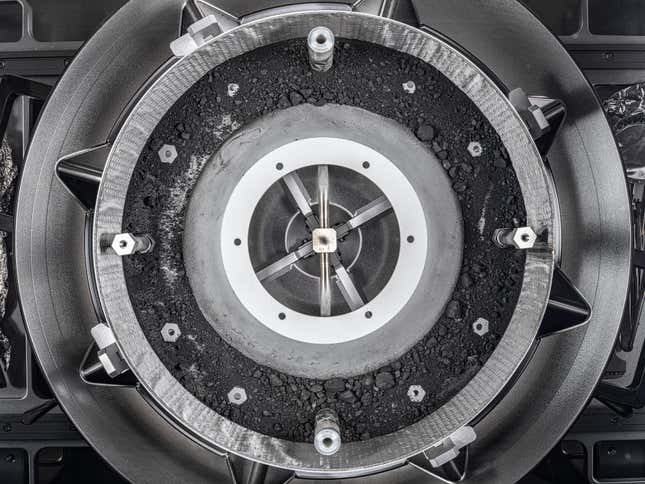
Image: NASA/Erika Blumenfeld & Joseph Aebersold
NASA finally managed to crack open the lid to its asteroid sample container in early January, revealing an unbelievable trove of surface materials gathered by the OSIRIS-REx spacecraft from asteroid Bennu. NASA has exceeded its target of returning a minimum of 2.12 ounces (60 grams) of rock and dust to Earth, with an estimated total sample weight of 8.8 ounces (250 grams), including bonus samples found atop the lid.
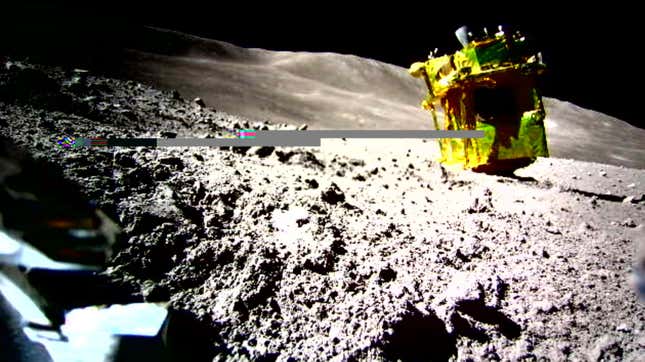
Image: JAXA
On January 19, Japan became only the fifth country to successfully pull off a soft landing on the Moon. Its lander, dubbed SLIM (Smart Lander for Investigating Moon), performed a precision targeted landing, coming to within 180 feet (55 meters) of its intended location. Unfortunately, however, SLIM didn’t land exactly right, tipping over onto its head and temporarily rendering its solar panels useless. The lander did manage to come back from the dead one week later owing to some fortuitous sunlight, allowing the mission to continue. The image above was taken by Sora-Q, one of two tiny robots ejected to the surface during the landing.
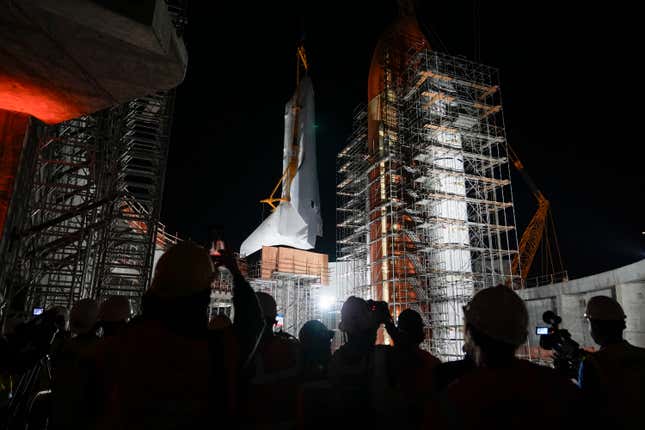
Photo: Ashley Landis (AP)
On January 29, the decommissioned Space Shuttle Endeavour was carefully lifted and joined to a large external fuel tank and twin solid rocket boosters at the future site of the Samuel Oschin Air and Space Center at the California Science Center. Once complete, it will be showcased in its blast off position—a first for a Space Shuttle display.
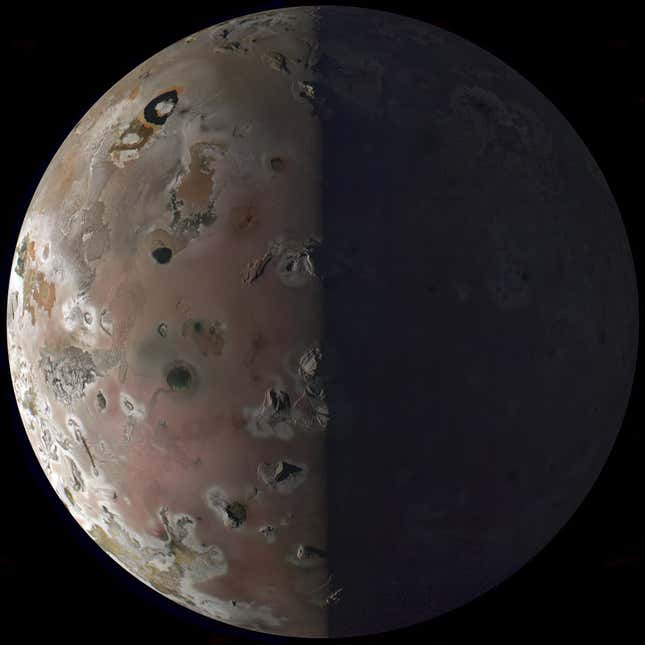
Io, as captured by NASA’s Juno probe and processed by NASA engineer Kevin M. Gill.Image: NASA/JPL-Caltech/SwRI/MSSS/Kevin M. Gill
The JunoCam instrument aboard NASA’s Juno spacecraft captured several new views of Io during a close encounter of Jupiter’s volcanic moon on December 30.
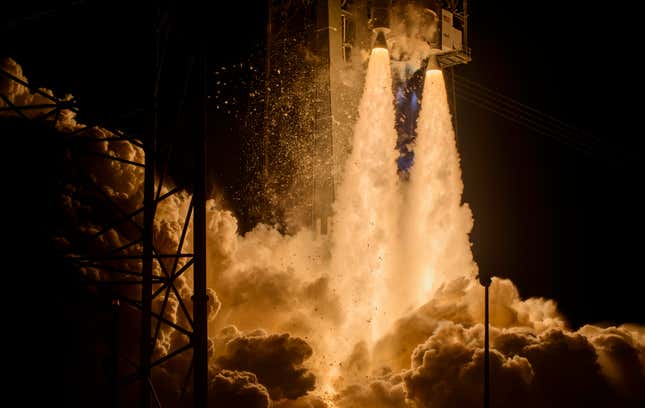
Photo: C&J Images
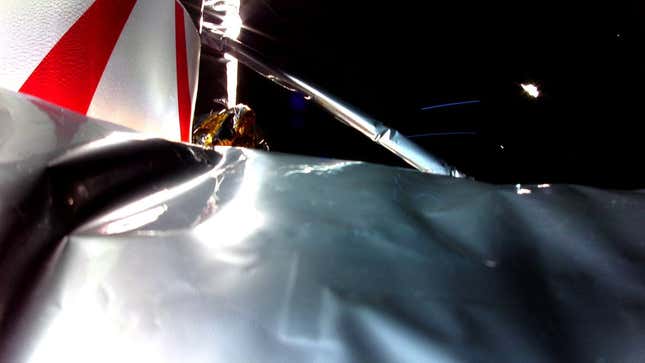
an in-space view of Peregrine after launch, showing damage to its insulation layer.Photo: Astrobotic

Photo: Liu Huaiyu (AP)
This spectacular image shows China’s Gravity-1 rocket embarking on its record-breaking first flight. The launch took place on January 11 from a sea platform located off the coast of Haiyang in China’s Shandong Province. Gravity-1, designed by OrienSpace, is now the largest solid-fueled orbital launch vehicle in terms of payload capacity.
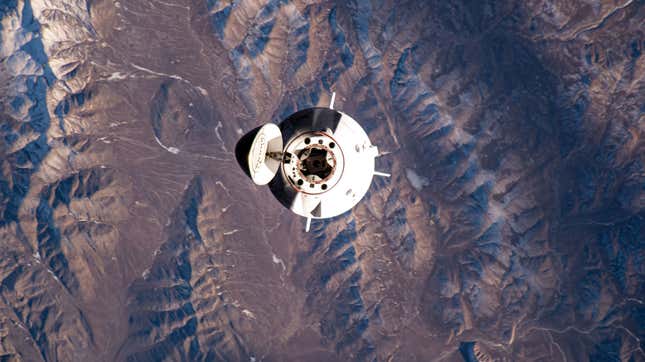
Photo: NASA
On January 20, a photo captured the SpaceX Dragon Freedom spacecraft as it approached the International Space Station, located 260 miles (418 kilometers) above China, north of the Himalayas. The Dragon was carrying the four-member Axiom Mission 3 (Ax-3) crew on its journey to the orbital lab.
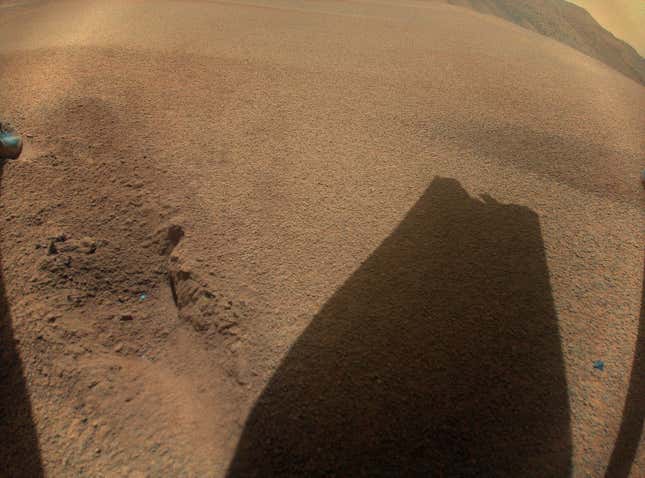
Photo: NASA/Caltech
After three years and 72 flights, NASA’s Ingenuity rotorcraft was declared unfit for flight, ending the historic Mars mission. On January 18, the space agency said the helicopter had sustained damage to a blade during a landing. The image above shows the stricken blade’s shadow, revealing its badly frayed tip. Ingenuity, the first vehicle to perform controlled flight on another world, now sets the stage for more ambitious missions involving aerial vehicles.
Gif: Sierra Space/Gizmodo
In January, U.S. company Sierra Space conducted a dramatic burst test on a full-scale inflatable module that could eventually form a space station in low Earth orbit. It took 77 pounds per square inch (psi) of force to blow up the 20-foot-tall Large Integrated Flexible Environment (LIFE) module, which is far beyond its expected working capacity of 15.2 psi.
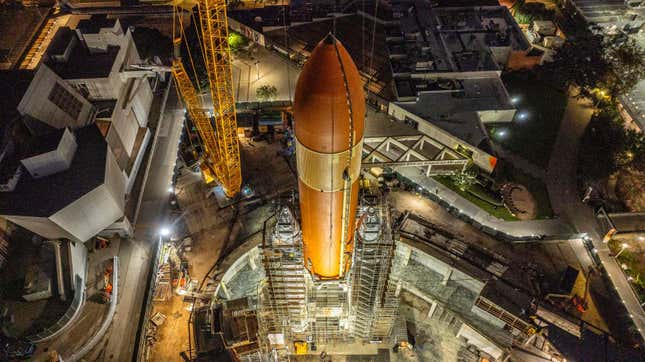
Photo: California Science Center
On January 13, External Tank ET-94 was successfully lifted and positioned atop the Solid Rocket Boosters as part of the construction of the future Samuel Oschin Air and Space Center. The procedure took over 26 hours to complete. This is a real tank built for the Space Shuttle, but it never flew, as NASA used it for tests in the wake of the 2003 Columbia disaster.
Gif: University of Glasgow/Gizmodo
Engineers from the University of Glasgow are developing the world’s first unsupported autophage rocket engine. In other words, it’s a rocket that eats itself for fuel. This innovative engine utilizes waste heat generated during combustion to melt its plastic fuselage, which is then used as fuel. The video above shows the final stages of the process.
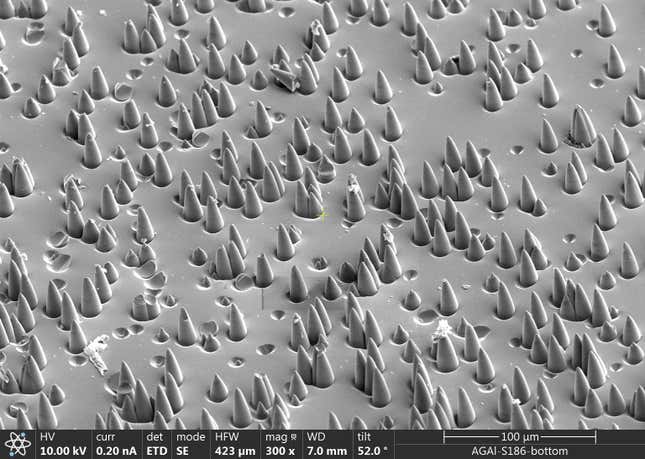
Image: Safran
This striking scanning electron microscope image offers an intimate view of a test glass surface, part of a project to enhance the lifespan of atomic clocks in navigation satellites. The plasma-etched features, each less than 10 micrometres across, are crucial for the operation of these highly accurate clocks. They function by inducing switches between an atom’s energy states using light, laser, or maser energy (a device that produces and amplifies electromagnetic waves), leading to the emission of a stable microwave signal at a specific frequency. This microscopic image, part of an ESA project with Safran, displays conical patterns from etching and plasma effects, aiming to enhance space atomic clock reliability. The accuracy of navigation satellites hinge on precise timekeeping, as positions are determined by multiplying signal travel times by the speed of light.

Photo: NASA
On January 5, the Special Purpose Dexterous Manipulator (Dextre), a precision robotic hand built by the Canadian Space Agency, was photographed in front of the ISS’s primary solar arrays while the station orbited above the Pacific Ocean. Here, Dextre is attached to the leading tip of the Canadarm2 robotic arm, located at far right of the photo.
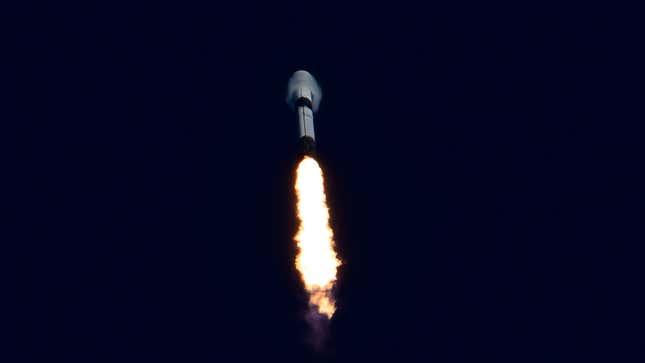
Photo: C&J Images
A SpaceX Falcon 9 blasted off from Cape Canaveral Space Force Station, Florida, on January 30, delivering a Cygnus spacecraft filled with cargo to the ISS. The NG-20 mission marked the first Falcon 9 launch of Northrop Grumman’s expendable Cygnus vehicle, named in honor of astronaut Dr. Patricia “Patty” Hilliard Robertson.


















 English (United States) ·
English (United States) ·